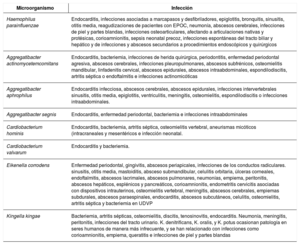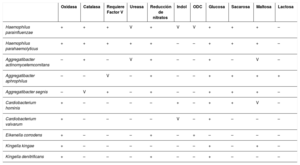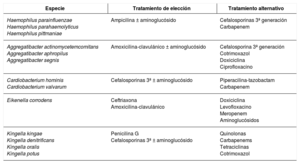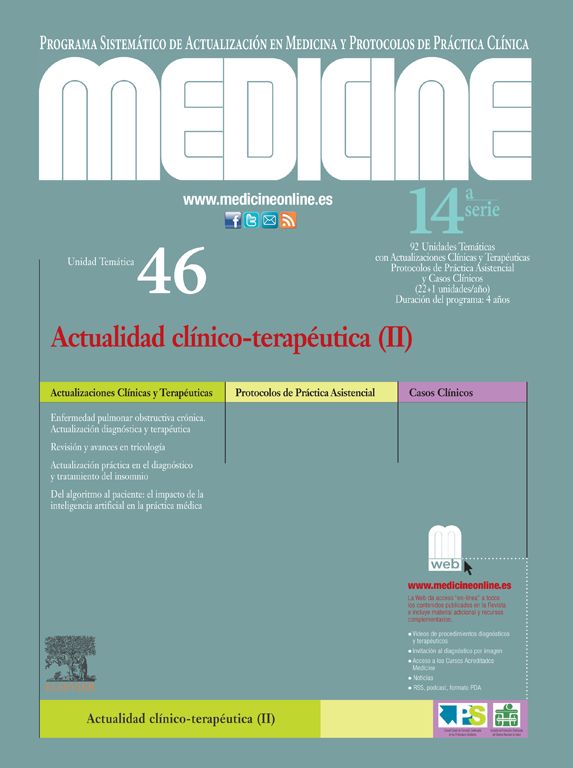El grupo HACEK (Haemophilus, Aggregatibacter, Cardiobacterium, Eikenella, Kingella) incluye bacterias gramnegativas de crecimiento lento que forman parte de la microbiota del tracto respiratorio superior y genitourinario del ser humano y de los animales.
Manifestaciones clínicasSon los bacilos gramnegativos de crecimiento lento, que con mayor frecuencia causan infecciones en el ser humano, pudiendo dar lugar a infecciones en cualquier localización, pero fundamentalmente infecciones de piel y tejidos blandos, bacteriemia y endocarditis.
DiagnósticoSon bacterias nutricionalmente exigentes y para el desarrollo de colonias visible requieren agar sangre y/o agar chocolate, una atmósfera aerobia, generalmente enriquecida en CO2 y una incubación, al menos, de 48 horas. Su identificación fenotípica a nivel de especie es complicada y no siempre es posible, incluso utilizando sistemas automatizados; no obstante, la aplicación de las técnicas moleculares y proteómicas ha permitido incrementar el nivel de identificación y conocer su papel en la patología infecciosa del ser humano.
TratamientoLos datos de sensibilidad a los agentes antimicrobianos son limitados, aunque basándose en los datos existentes se conoce que amoxicilina-ácido clavulánico, cefalosporinas de segunda y tercera generación y fluoroquinolonas son generalmente activas frente a ellas.
Palabras clave
The HACEK group (Haemophilus, Aggregatibacter, Cardiobacterium, Eikenella, Kingella) includes slow-growing gram-negative bacteria that form part of the microbiota of the upper respiratory and genitourinary tracts of humans and animals.
Clinical manifestationsThese are the slow-growing, gram-negative bacilli that most frequently cause infections in human beings, and can give rise to infections in any location, but fundamentally the skin and soft tissues, and cause bacteraemia and endocarditis.
DiagnosisThey are nutritionally demanding bacteria and for visible colonies to develop require blood agar or chocolate agar, an aerobic atmosphere, generally CO2 rich and incubation of at least 42hours. They are difficult to identify phenotypically as a species and it is not always possible to do so, even using automated systems. However molecular and proteomic techniques have resulted in increased identification and an awareness of their role in human infectious pathology.
TreatmentThere is limited data on their sensitivity to antimicrobial agents, although from the existing data it is known that amoxicillin-clavulanic acid, second and third generation cephalosporins and fluoroquinolones generally act against them.
Keywords
Identifíquese
¿Aún no es suscriptor de la revista?
Comprar el acceso al artículo
Comprando el artículo el pdf del mismo podrá ser descargado
Teléfono para incidencias
De lunes a viernes de 9h a 18h (GMT+1) excepto los meses de julio y agosto que será de 9 a 15h







